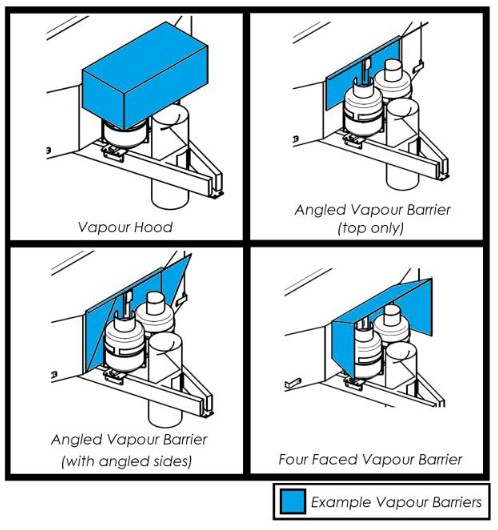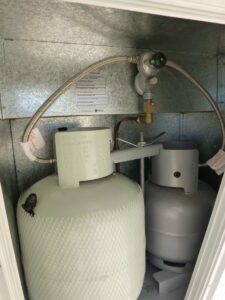This is a key installation standard for Caravans and Recreational Vehicles and covers LP gas Installations in caravans and boats for non-propulsive purposes.
For DIY customers who intend to have ANY LP Gas appliances installed, the law requires this work to be carried out and certified by a licensed LP Gas Installer.
As the vehicle designer, customers would be well advised to make sure they themselves and their gas installer are up to date with these changes. Failure to do this may lead to your gas installer not being able to certify the gas installation.
The dates when the new Standard will be implemented vary depending on each individual State, and the national body and each state association will look to jointly provide further information relating to the changes and what you need to know leading into the implementation date in each state.
Below is the KEY CHANGES SUMMARY released 1st October 2020
It is important to note that this overview does not provide an exhaustive list of changes and is provided as general guidance and information based on our understanding of the gas standard requirements. It is strongly recommended that industry businesses make their own investigations and explore the changes to AS/NZS 5601.2.2020 with regard to the Recreational Vehicles they are producing. It is also important to ensure that the relevant personnel (e.g. Licenced Gasfitters, Vehicle Designers etc.) within your business are up-to-date with these changes.
- The most significant change in this revised standard is the introduction of a “controlled area” around gas cylinders and cylinder compartments on domestic caravans (and similar Recreational Vehicles), which is an exclusion area for any ignition sources that could present a risk of explosion in the event of a gas leak. This is a similar concept to the cone-shaped hazardous zone in the previous version of this standard, but with some significant modifications such as:
- Reduced size & shape at the base of the cone
- Some equipment is deemed NOT to be an ignition source. In particular, this allows essential functional and road safety equipment within the controlled area (e.g. trailer plugs, ESC equipment, break-away brake controllers)
- Electrical equipment that is fully encapsulated can be located within the zone providing it meets strict conditions to ensure there is no potential for ignition. There are clauses in the standard detailing the requirements for adequate encapsulation.
- The controlled area will apply to compartments that can be opened to expose ignition sources within the envelope of the controlled area. This may affect compartments such as front boots, equipment boxes or similar that contain electrical equipment or appliances, or make provision for their later addition by consumers.
The standard introduces new definitions to support and clarify the controlled area requirements. These are key to correctly understanding and applying the controlled area restrictions
A new inclusion in the standard allows the use of a vapour barrier as an acceptable technical solution to limit (reduce) the size of the controlled area. Vapour barriers can be used to shield vulnerable areas from exposure to leaking gas, acting to separate gas concentrations from possible ignition sources. This is a recommended solution for current model vehicles with openable compartments in close proximity to gas cylinders.
In recognition that openable compartments typically in use in current industry products are likely to be significantly affected by the new controlled area application, Caravan Industry Association of Australia in collaboration with its member State Associations commissioned a gas flow modelling project to identify vapour barriers that could be used to shield openable compartments that would otherwise sit within the controlled area. The basic concept of the vapour barriers are shown in these diagrams.

Another significant new addition to this standard are changes to allow the introduction of Type 27 valves to LPG cylinders. These appear in AS/NZS 5601.2:2020 as references to cylinder quick-connect devices. A further technical bulletin with detailed information about the Type 27 cylinder valve introduction will be published in due course.
Some further key changes in the revised standard are as follows:
- LP Gas Cylinders used on a caravan (or similar RV) are limited to a maximum size of 25L capacity (nominal 10kg).
- Multiple gas cylinders connected to a caravan (or similar RV) installation are limited to a maximum of 2 cylinders. Any unconnected or spare cylinders that are carried must meet the same stowage and clearance requirements as a connected cylinder.
- Improved clause relating to internal gas cylinder compartments, with clearer wording around access, venting and labelling requirements.
- Introduction of a new consumer warning label to be located on or near the entry door of caravans:WARNING —IF FITTING AN ANNEX CONTACT A GASFITTER TO ADVISE ON THE VENTILATION REQUIRED FOR SAFE OPERATION OF GAS APPLIANCES
- Overhead clearances above a cooker must be in line with the manufacturers instructions for both the cooking appliance and rangehood/ exhaust fan.If there is a discrepancy between the two, the larger specified clearance shall be applied.In the absence of manufacturer instructions, the height requirement increases to 650mm which is consistent with international standards.
Some requirements that have been in previous versions of the standard have been reinforced:
- All appliances connected to the gas installation must have flame safeguard systems on all burners. This includes appliances connected through a quick-connect device such as an external gas bayonet.
- Stowed gas appliances must have a means of isolation to prevent the flow of gas when the appliance is stowed. It is noted that disconnection of a bayonet fitting is considered a suitable isolation, but additional shut-off features are encouraged.
- Gas cylinder mounting straps must include an insulating layer to protect the surface of a gas cylinder against damage and corrosion
Implementation of AS/NZS 5601.2:2020
It is understood that some of the changes outlined in this bulletin may require significant investigation and some lead-time to implement, especially on existing models.Each of the State Caravanning Associations are working with their respective Gas Technical Regulators to confirm the details of transition arrangements, particularly around timing for full implementation and enforcement of the new standard.
Disclaimer: This article was provided to help customers with compliance and was correct as at time or writing – Nov 2020. Customers MUST make themselves aware of the relevant Regulations and Standards as at their build date and ensure they comply with them.


